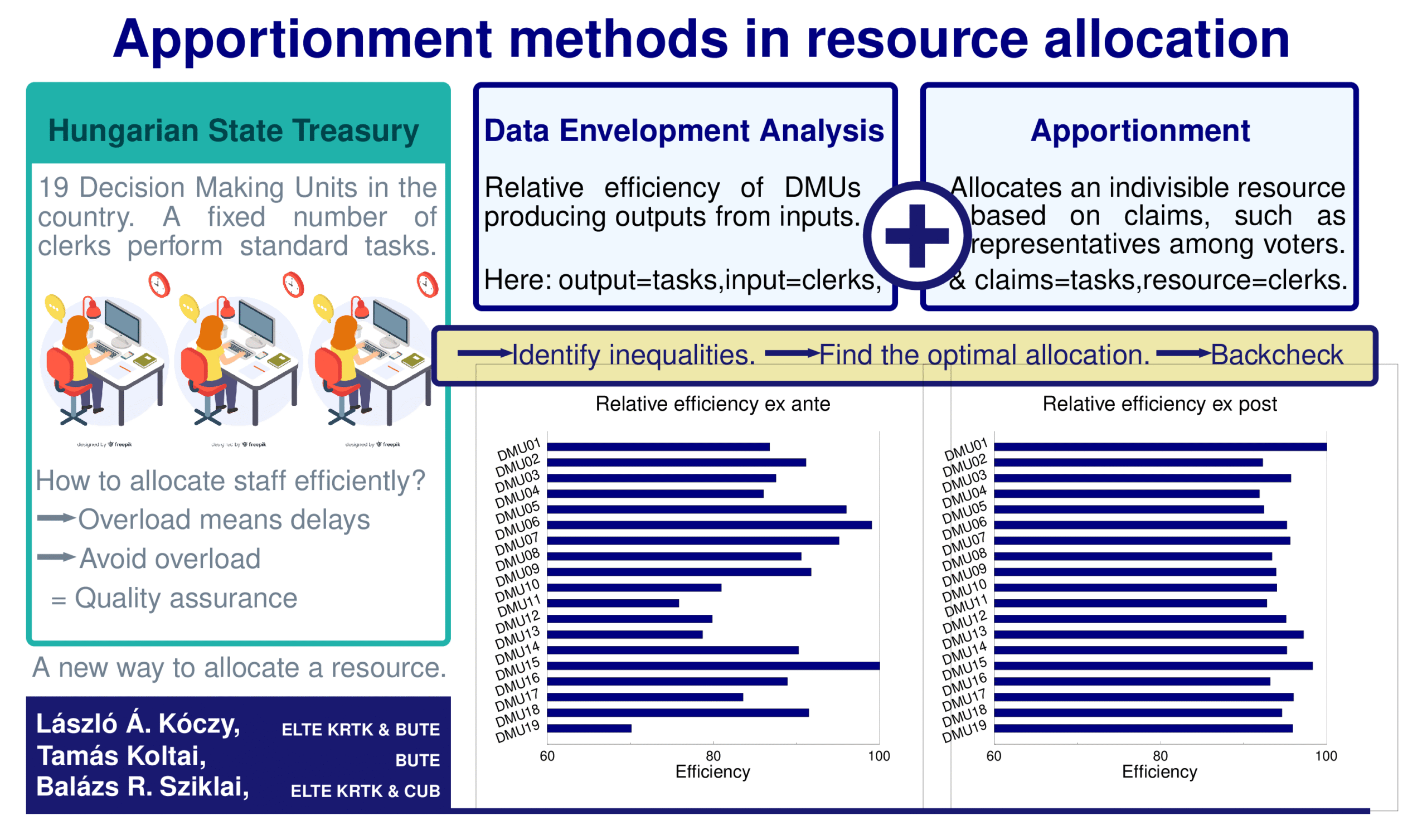László Á. Kóczy – Tamás Koltai – Balázs R. Sziklai
Omega, Vol. 138. Art. No. 103403. (2026)
Abstract
The efficient use of resources is of paramount importance in any organization, and this is especially true of the use of human resources. We are considering an organization with a fixed number of workers over a network of subunits. The relative efficiency of these units can be uncovered using Data Envelopment Analysis (DEA) methods. How do we overcome efficiency differences when resources are constrained? Motivated by concerns for quality assurance, we use a method that lexicographically minimizes the tasks per worker. We present a fast algorithm to calculate the optimal allocation. Connections to the apportionment literature — mostly focusing on the fair allocation of voting districts among geographical or administrative regions, — are discussed. The allocation can be validated using DEA: efficiency indicators are now levelled.

The method is illustrated using data from salary administrators at the Hungarian State Treasury’s 19 county-level subsidiaries. Knowing the number of standard administrative tasks for each subsidiary and each month, we allocate workers proportionally to the busiest months. After the reallocation, the relative efficiency of the worst-performing counties moves from about 60% to over 90%.
https://doi.org/10.1016/j.omega.2025.103403


